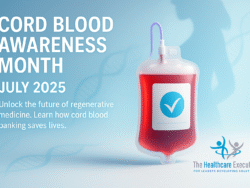Alcohol Awareness Month 2025: Executive Leadership in Prevention and Care

- Posted by Greg Wahlstrom, MBA, HCM
- Posted in Health Observance Calendar
Strategic System Engagement for Reducing Alcohol-Related Harm
Published: April 1, 2025
April marks Alcohol Awareness Month, a critical observance led by the National Council on Alcoholism and Drug Dependence (NCADD) and supported by healthcare leaders nationwide. This annual initiative offers hospital executives and clinical administrators a strategic lens through which to evaluate the effectiveness of alcohol misuse prevention, treatment access, and community education. With over 140,000 alcohol-related deaths annually in the United States, executives must elevate their role beyond traditional care delivery. At Northwell Health, hospital-based Screening, Brief Intervention, and Referral to Treatment (SBIRT) programs are integrated across emergency departments to identify at-risk patients early. Alcohol Awareness Month isn’t just public health messaging—it’s an enterprise-wide leadership mandate.
Healthcare executives must align internal operations with prevention science and community-based strategies. Many hospital systems still operate without formalized substance use service lines or integrated behavioral health pathways. Through strategic workforce planning, leaders can deploy cross-trained teams that incorporate behavioral clinicians and case managers in high-risk departments. In states like California, county hospitals such as Contra Costa Health Services have implemented mobile care units that reach patients with co-occurring alcohol and mental health conditions. These models are not only cost-effective but strengthen trust and reduce readmissions. Leadership teams must evaluate their delivery infrastructure and reimbursement models through an alcohol prevention lens—not just for compliance, but for impact.
From a policy and governance perspective, boards and C-suites should embrace value-based care metrics that incorporate alcohol misuse outcomes. This includes tracking social determinants of health (SDOH), emergency department utilizations tied to alcohol, and treatment adherence. Healthcare executives at organizations like Banner Health are partnering with public health departments to establish data-sharing agreements that identify regional alcohol-related trends. When properly aligned, data governance structures can identify gaps and direct resource allocation toward culturally competent care models. As highlighted in our post on trust as a strategic asset, transparency and proactive communication are essential to effective substance use policy leadership. Boards that resist these integrations risk overlooking the community need for longitudinal recovery support.
Executive communications must evolve as well. Alcohol Awareness Month offers a strategic opportunity for hospital brands to reinforce their commitment to substance use prevention and behavioral health parity. Leaders should prioritize public-facing messaging that reflects both system accountability and accessible care. Internal staff campaigns should highlight referral pathways, confidentiality protocols, and emotional safety for both patients and clinicians. In collaboration with the SAMHSA National Helpline, hospital marketing teams can reinforce access to community services while elevating trust in the local health system. As executives shape these campaigns, it’s critical they balance narrative framing with data credibility—combining storytelling and analytics to inspire change and reassure stakeholders.
Ultimately, Alcohol Awareness Month should signal more than symbolic observance; it must mark measurable progress. This includes formalizing care transitions, scaling outpatient treatment, and investing in upstream prevention. Executive leaders have the opportunity to embed substance use strategies into hospital strategic plans, revenue cycle structures, and population health initiatives. As discussed in our feature on healthcare megatrends for 2025, sustainable systems will be those that link clinical governance with community engagement. By driving alcohol misuse interventions from the top, healthcare leaders reinforce a culture of wellness, dignity, and evidence-based care. In 2025, let Alcohol Awareness Month stand as a benchmark of system readiness and human-centered leadership.
Discover More
For related leadership strategies in behavioral health, visit our executive feature on care innovation and prevention-driven planning.
Internal Links
- The Healthcare Workforce Crisis: Executive Solutions That Actually Work
- Trust as a Strategic Asset: Reputation, Outcomes, and the Patient Voice
- Healthcare Megatrends 2025: What Every Executive Must Prepare For



